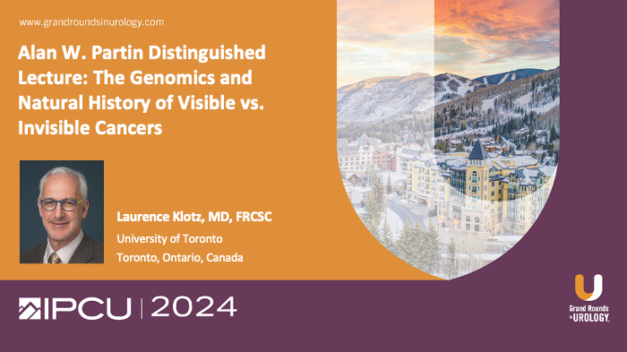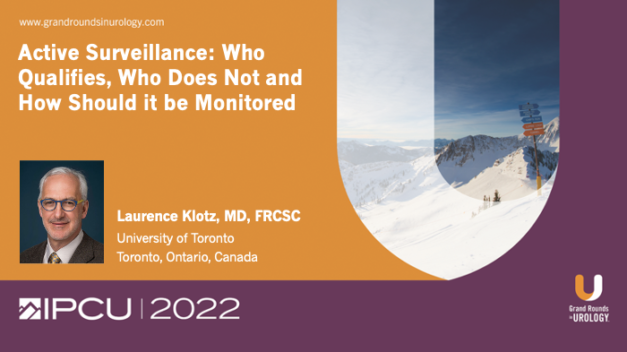Alan W. Partin Distinguished Lecture: The Genomics and Natural History of Visible vs. Invisible Cancers
Laurence Klotz, MD, FRCSC, presents the newly-emerging and provocative concept of MRI visibility as a predictor of prostate cancer tumor aggressivity in the Alan W. Partin Distinguished Lecture at IPCU 34. Given that more definitive data on the subject develops, and the urological community accepts it, this could imply significant changes to practice.
Currently, the concern over invisible cancers drives a lot of interventions, such as systemic biopsies in patients who have already undergone targeted biopsies and/or received negative imaging results.Patients on active surveillance derive anxiety from the possibility of having untreated occult cancer.
The clinical implication of imaging-based monitoring has many advantages, such as psychological benefit to the patient, and reduced cost and burden of care from avoiding systematic biopsies. Recent genomic and clinical studies support the idea that tumors invisible on MRI imaging have much more favorable genetics and natural history than those visible on MRI. This implies that in imaging-based management, the occasional missed cancers are not meaningful.
Many exciting genetic studies over the past six years have demonstrated merit to this theory, including a study identifying four genes predicting progression-free survival, metastases-free survival, and MRI visibility; a study correlating cancer aggressiveness and quantitative imaging features; and a correlation analysis of hypoxia-related genes and biparametric MRI visibility. A study from University of California, Los Angeles defined the term Nimbosus—a word derived from nimbus storm clouds—to describe an aggressive pathological, molecular, and microenvironmental phenomenon. This data suggested a confluence of the adverse features that make up nimbosus and MRI visibility.
However, there are still many unmet needs in this area, including an interrogation of uncommon invisible aggressive cancers, existing databases for robust data on invisible versus invisible cancers, and alternative imaging modalities like micro-ultrasound and PSMA-PET. As radiogenomics are still in their infancy, further, more definitive research must occur before adopting this into practice.
Read More


